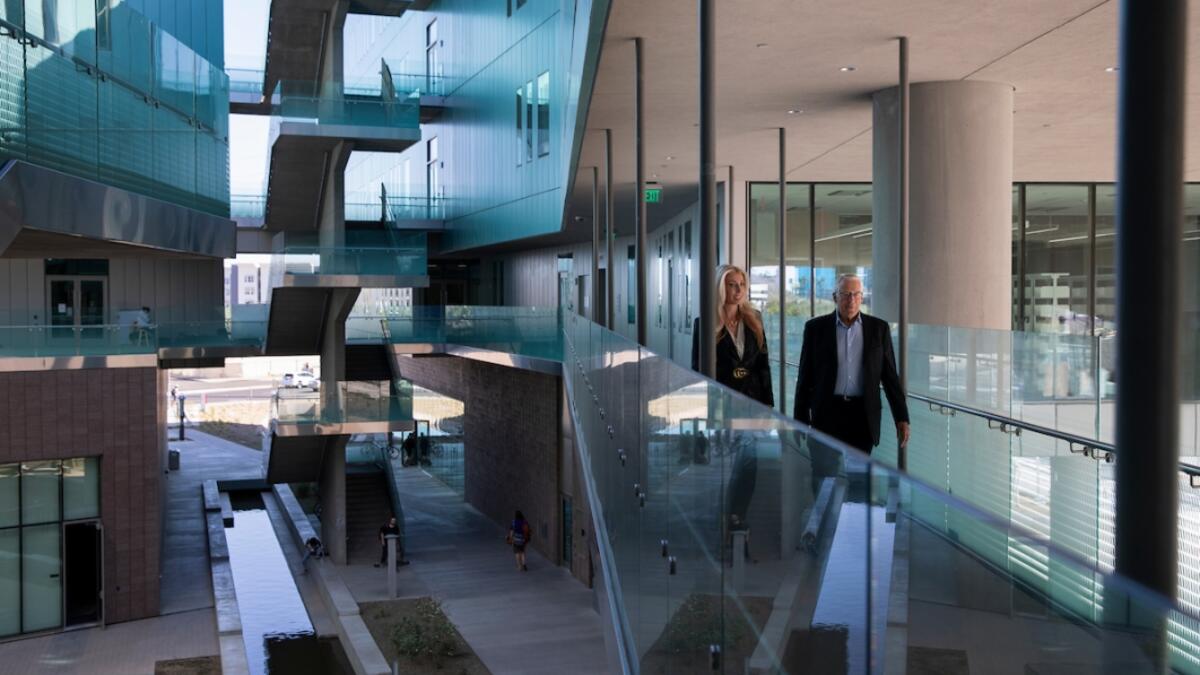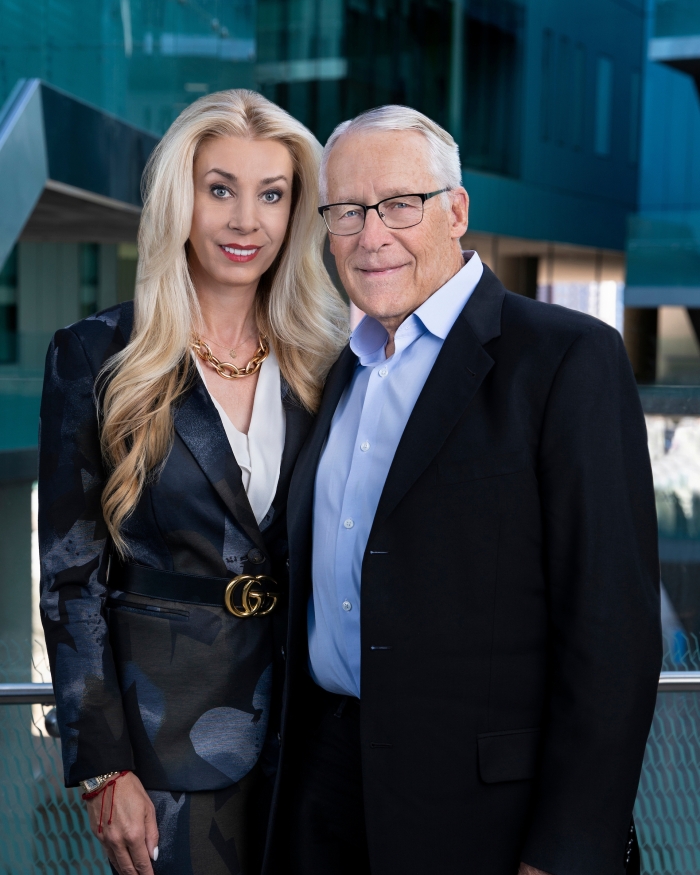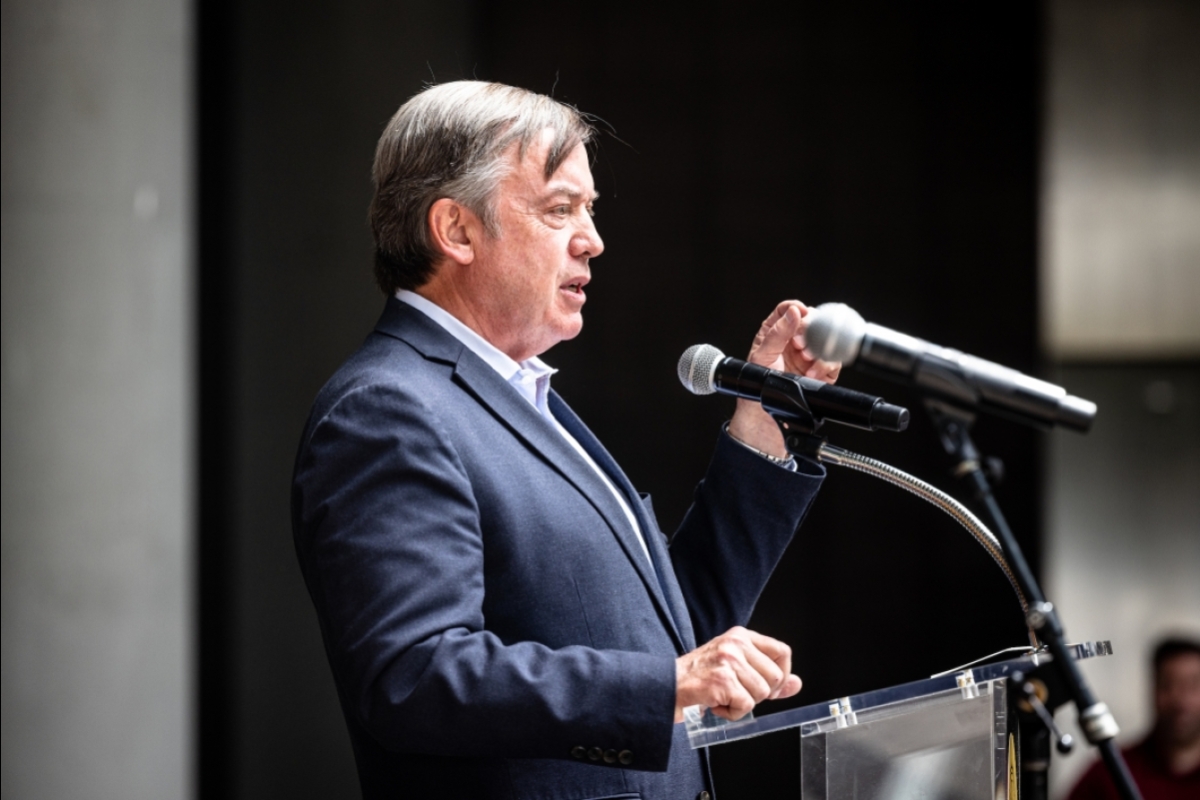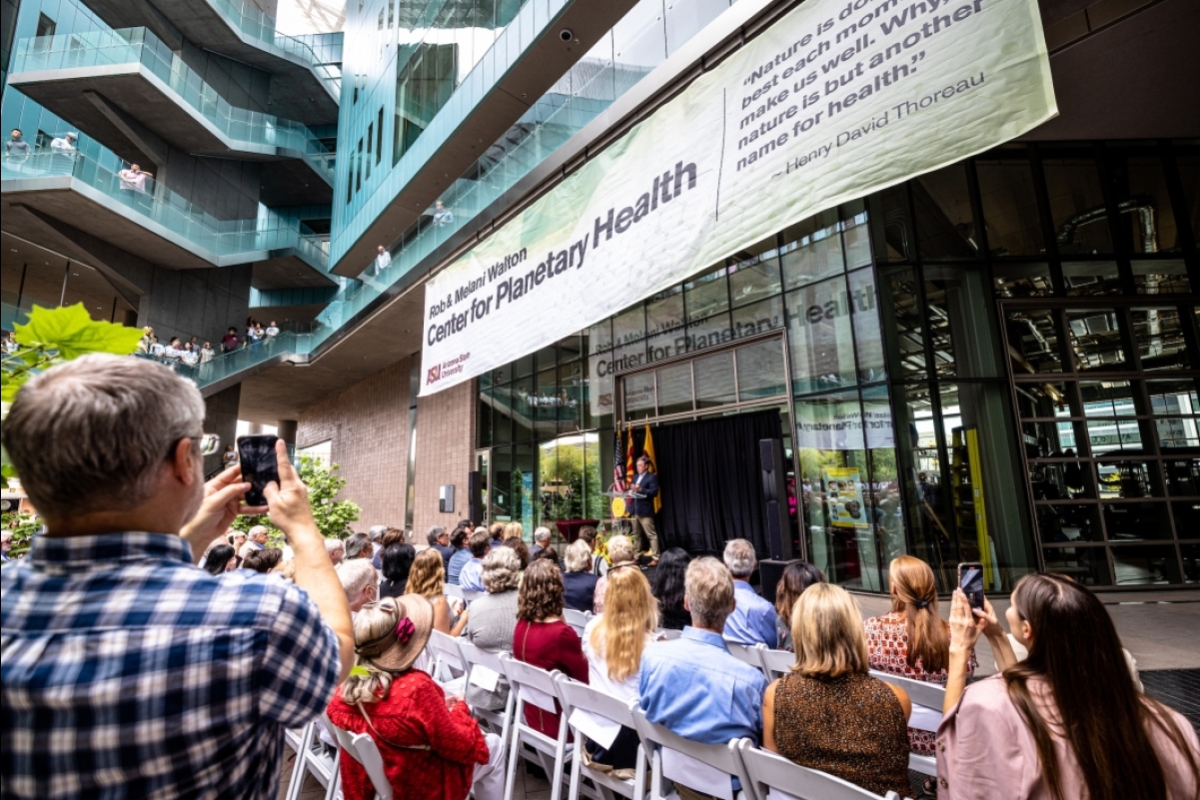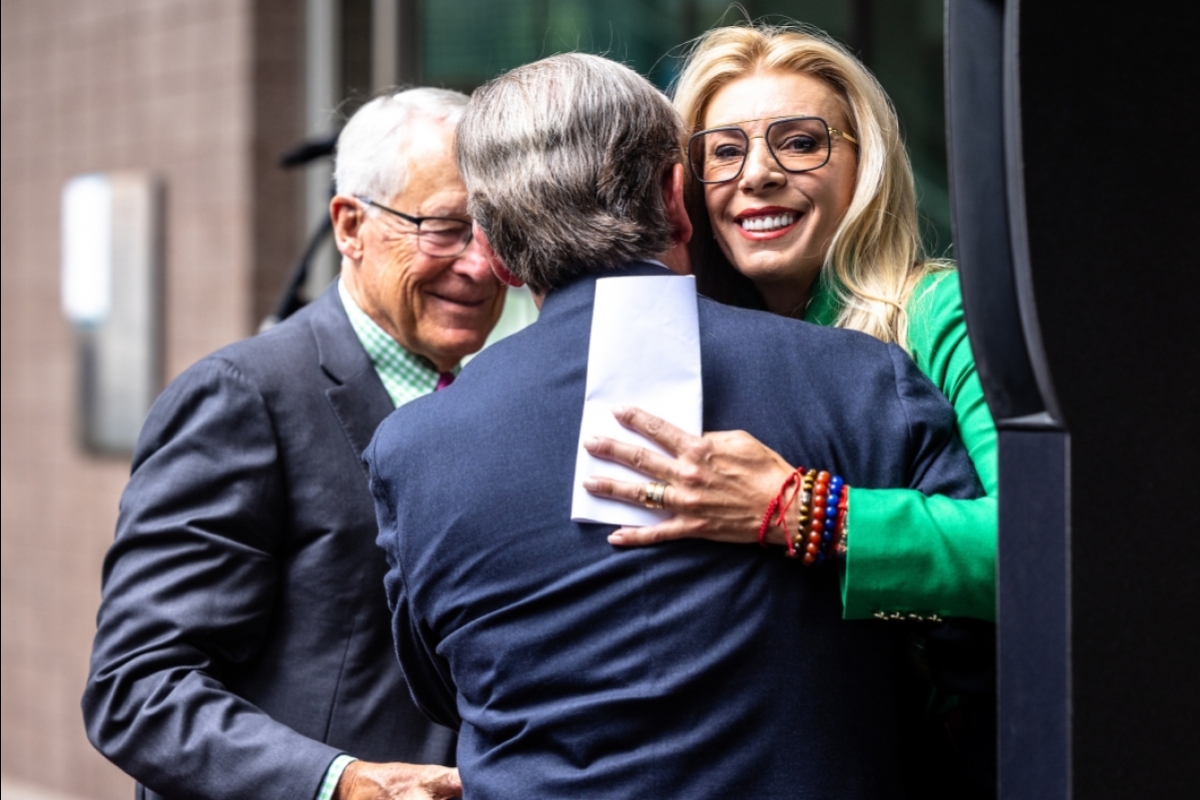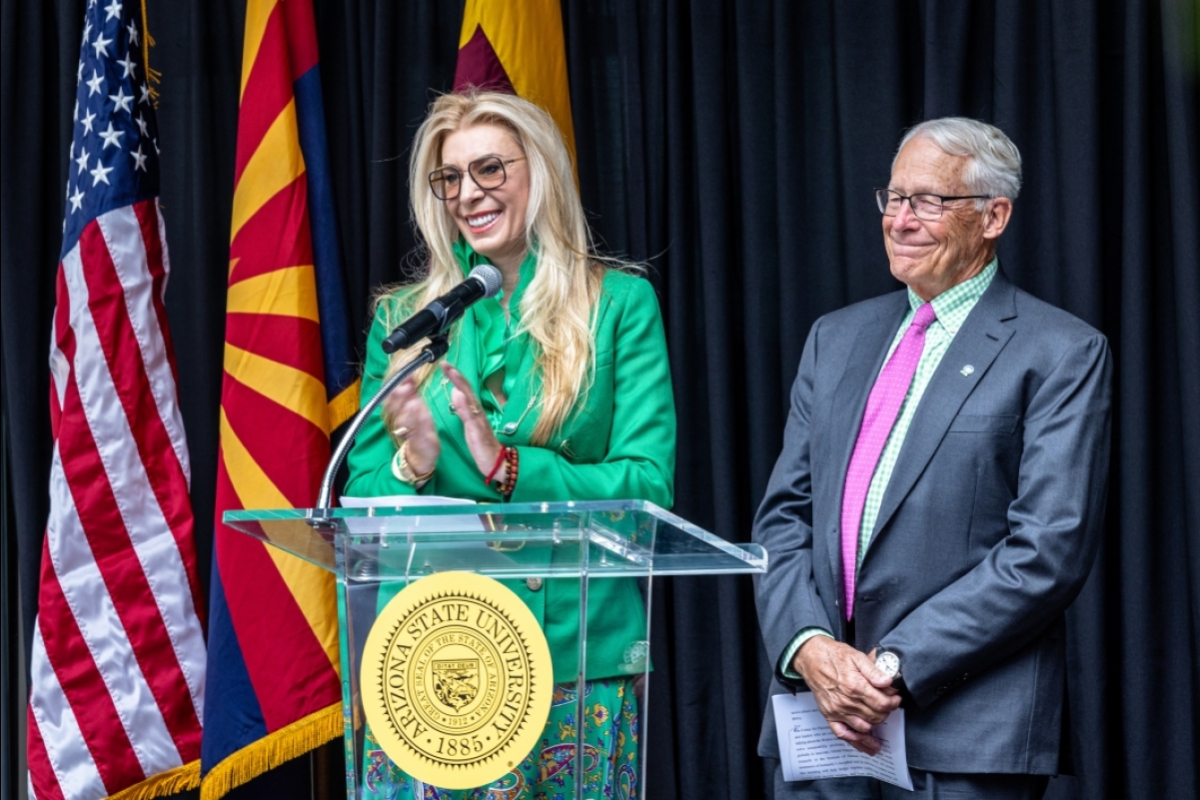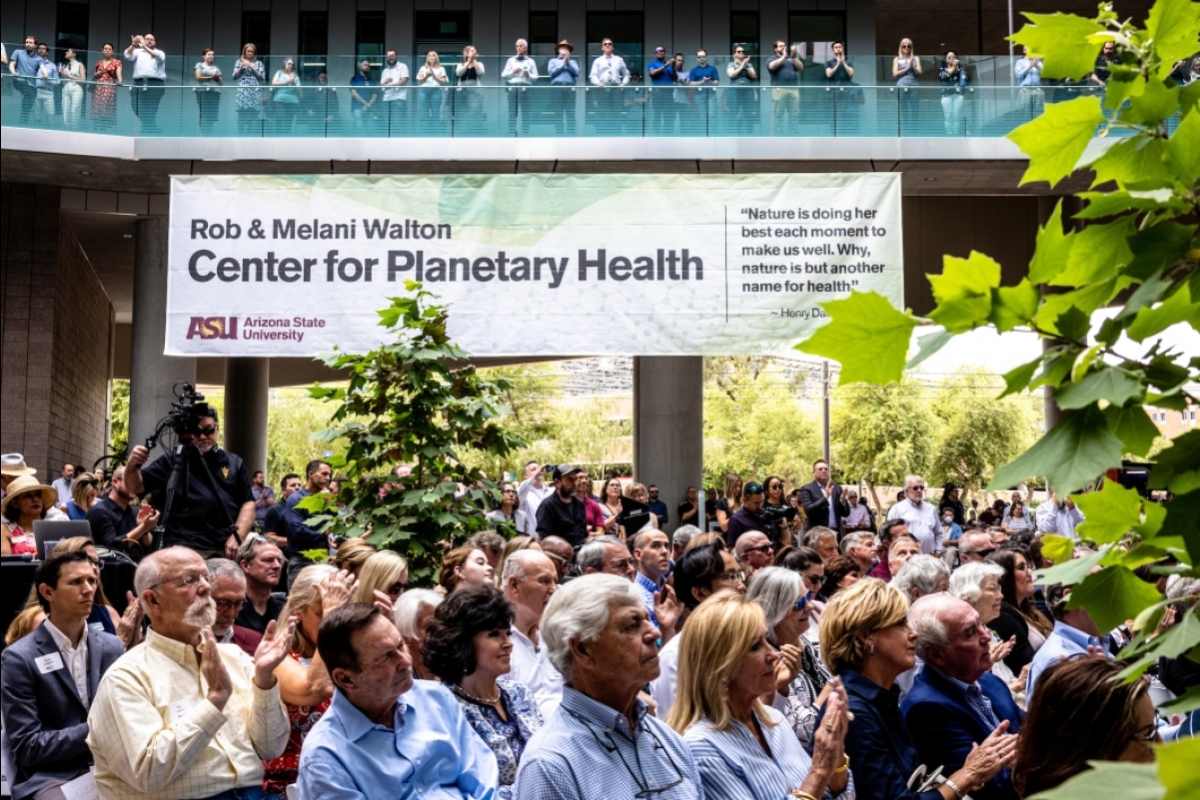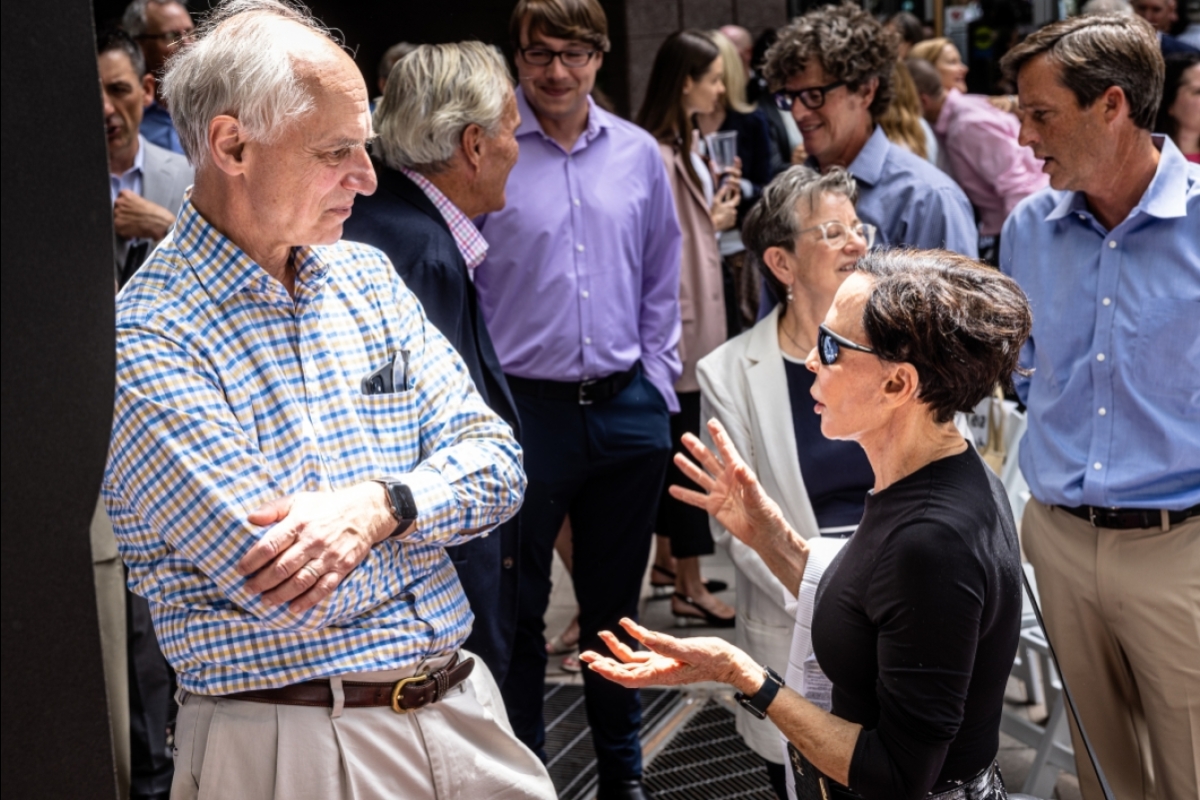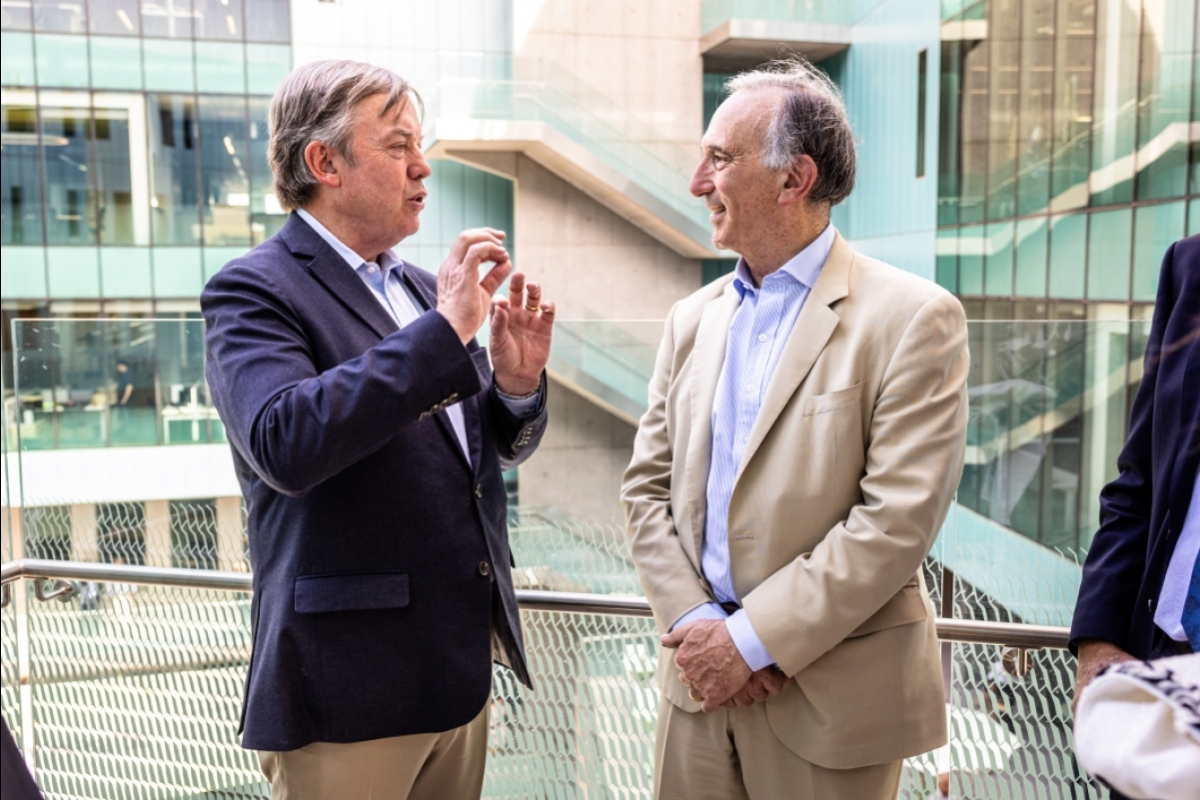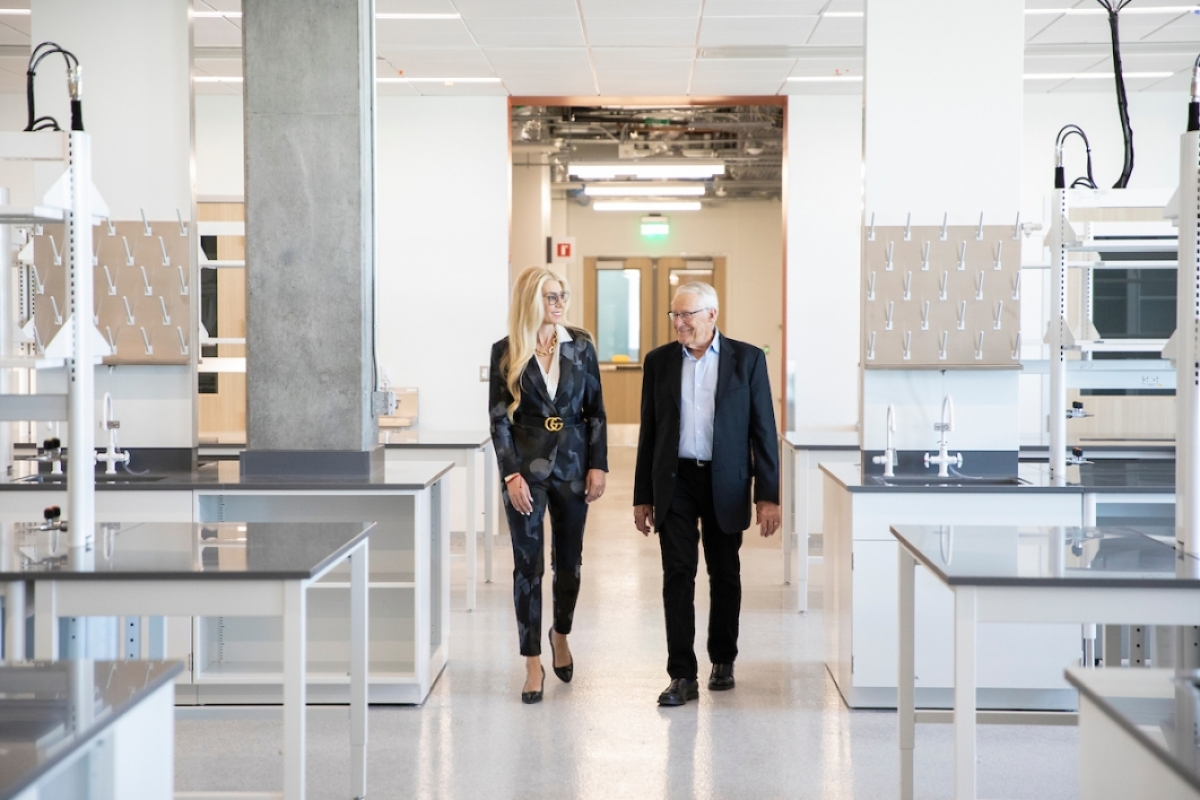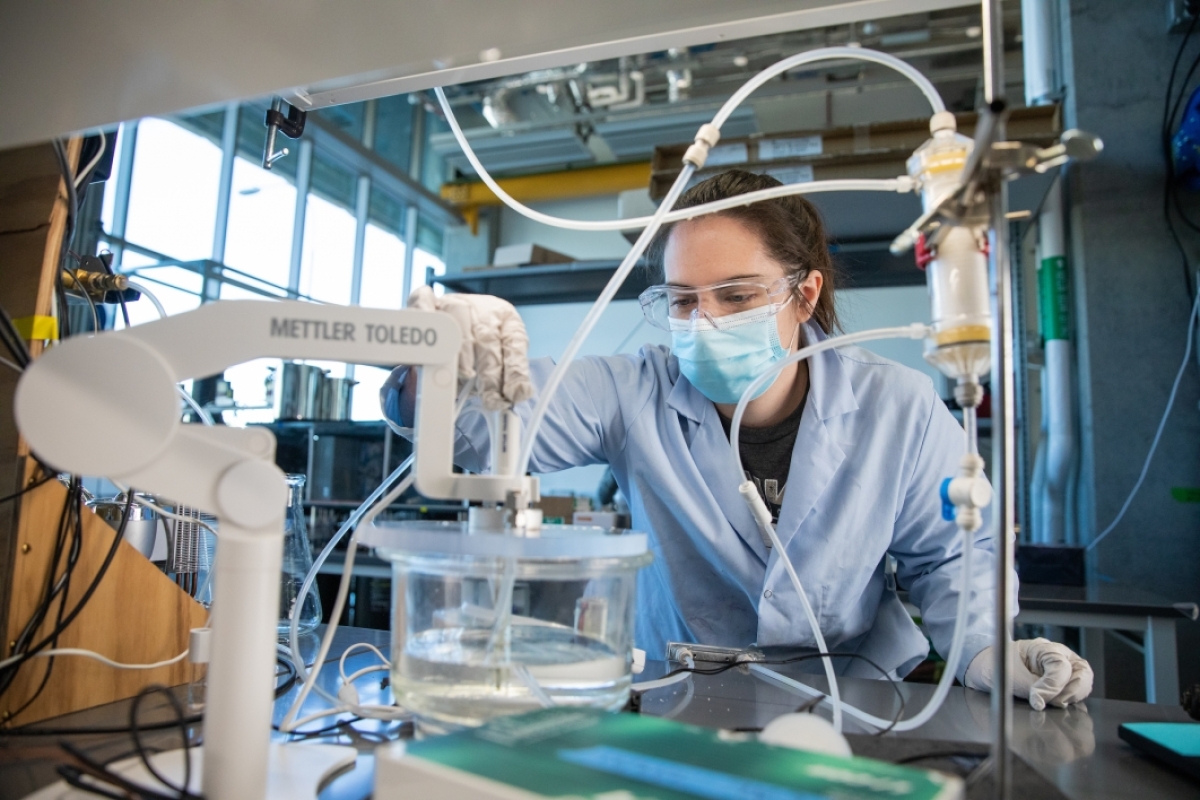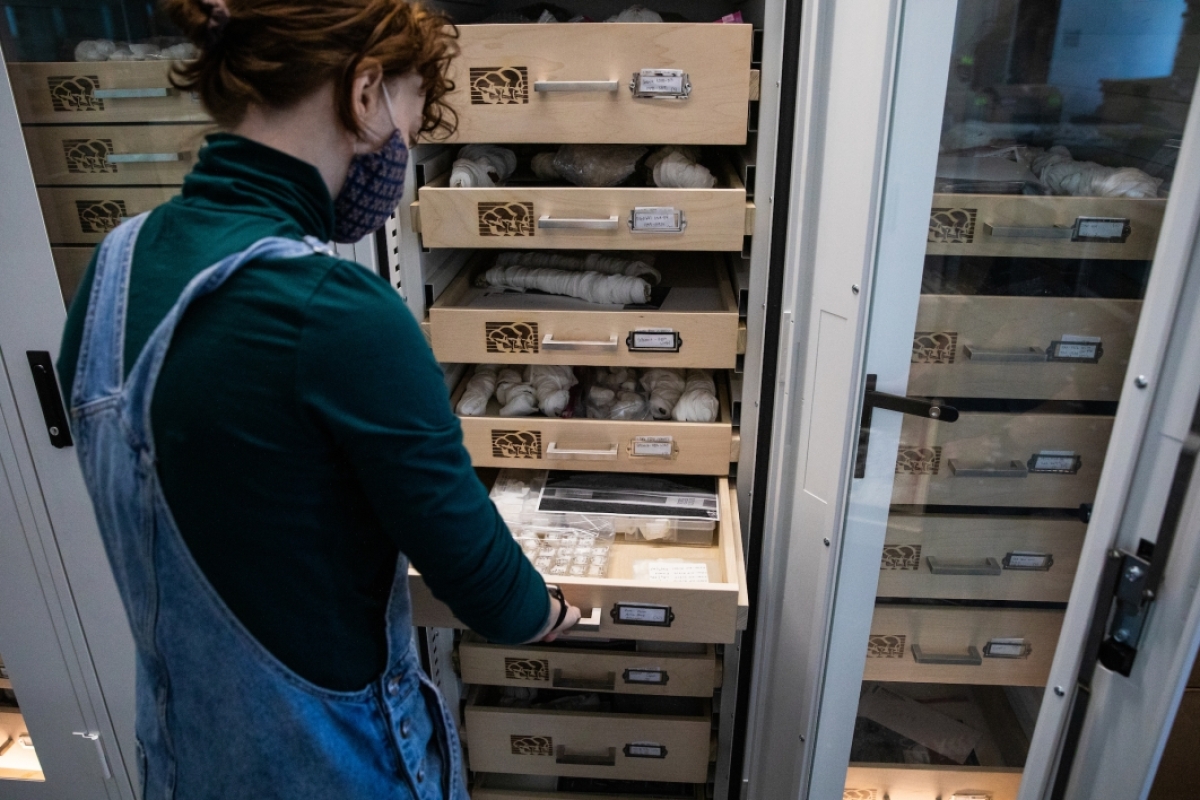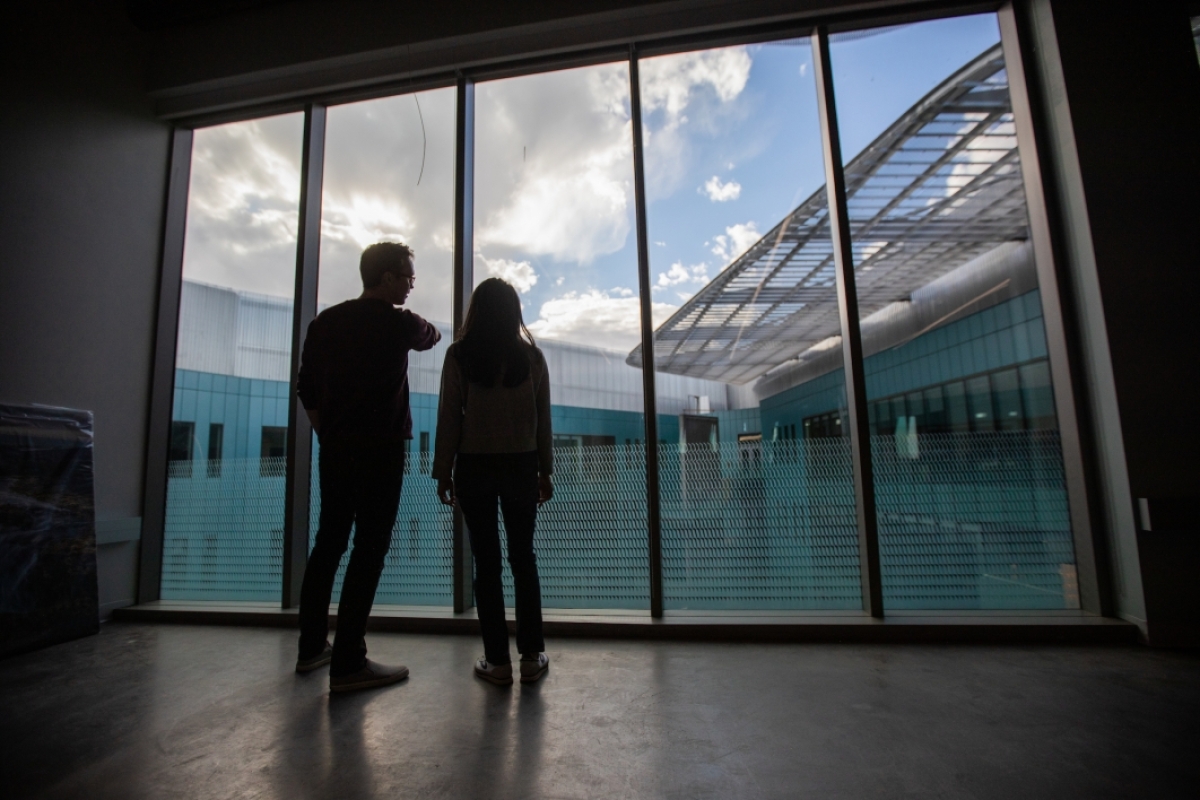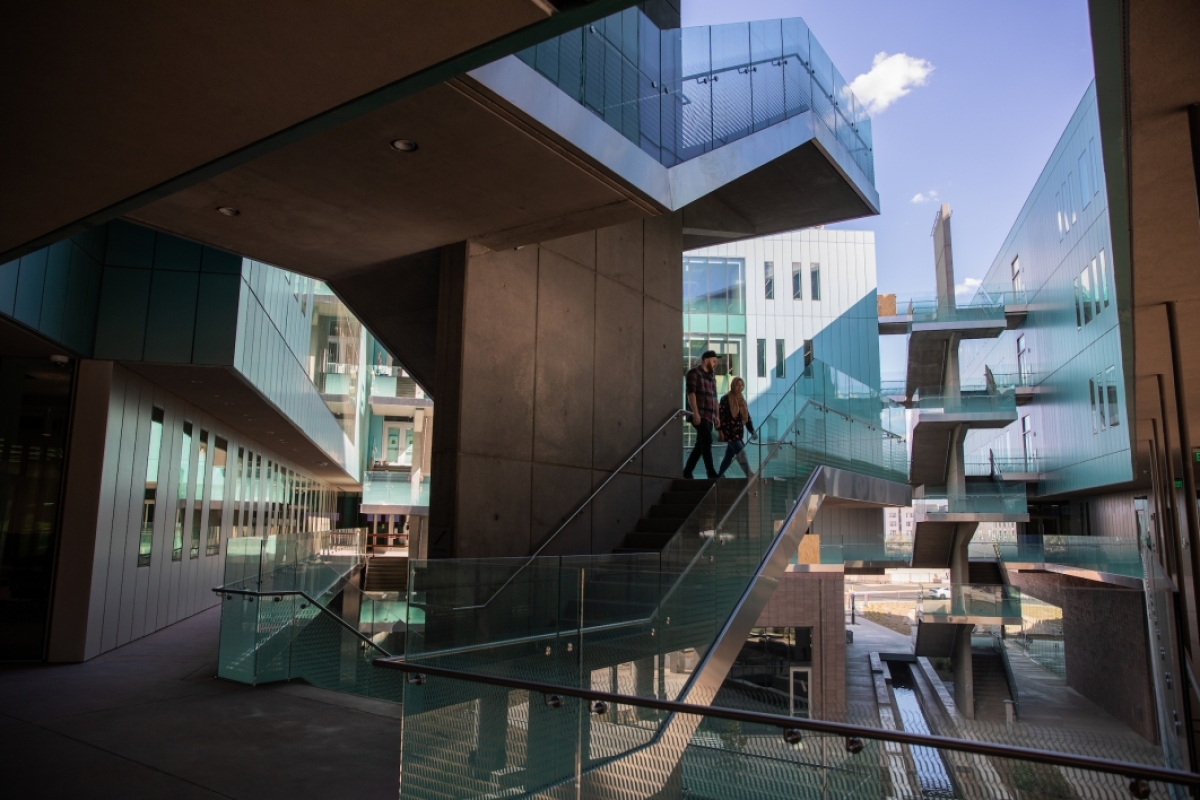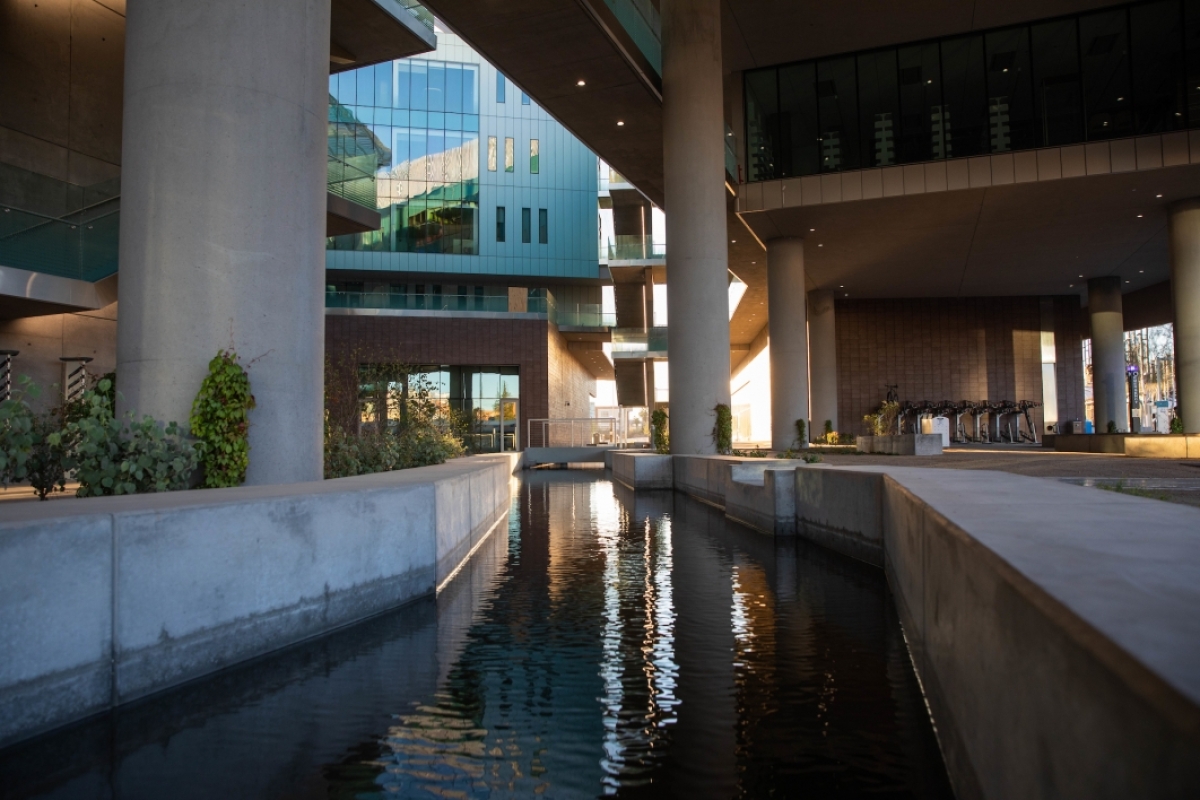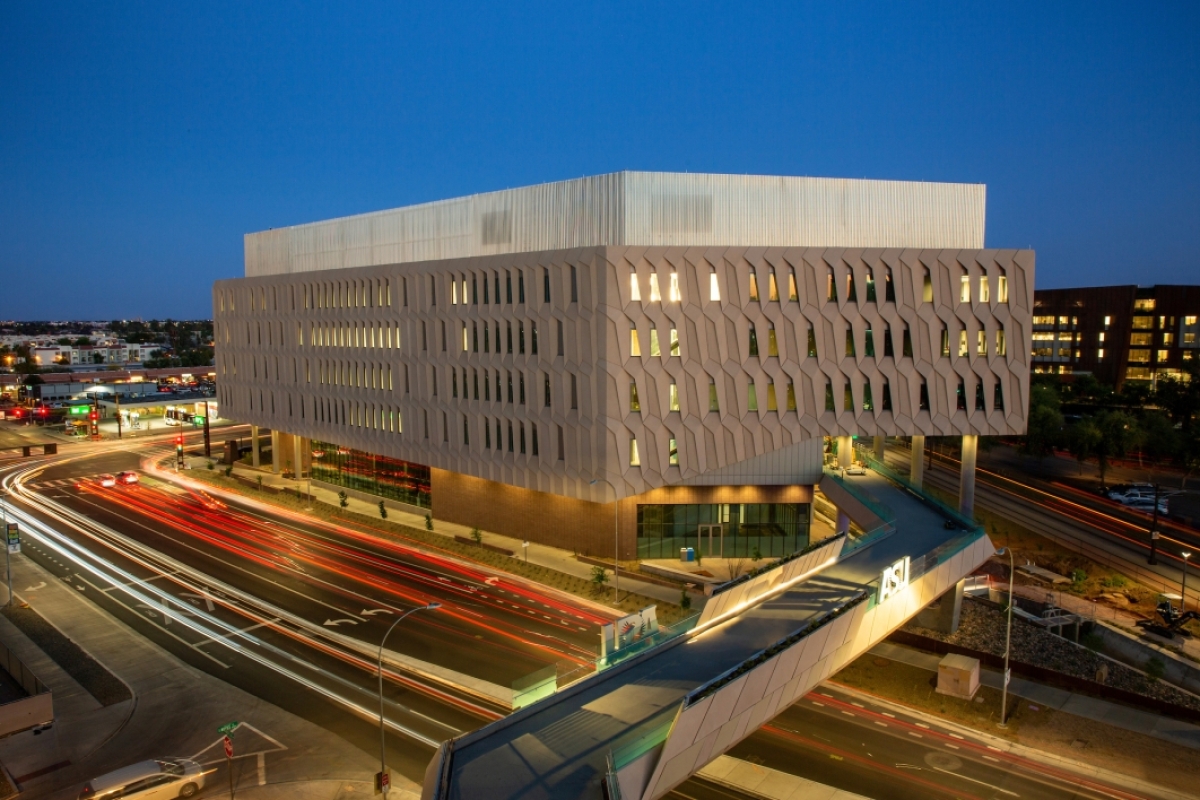Rob and Melani Walton. Photo by Deanna Dent/ASU
Editor’s note: This story is featured in the 2022 year in review.
Rob and Melani Walton have made a long-term commitment to organizations focused on sustainability solutions to improve the planet for generations to come.
At Arizona State University, they have made multiple investments in support of developing and deploying sustainable solutions for energy, water, environment, climate, urbanization and social transformation through the Rob and Melani Walton Sustainability Solutions Service.
In recognition of their commitment and investment, ASU’s newly opened Interdisciplinary Science and Technology Building 7, located at the southwest corner of Rural Road and University Drive, was named for the Waltons during a building dedication on Tuesday.
MORE: Earth Week blog roundup
“For ASU, this new facility represents the launch of the new American research university at an advanced trajectory,” ASU President Michael Crow said. “Rob and Melani Walton have been engaged with the university for almost two decades and their commitment has enabled us to do work that has deeper impact not only in terms of our students and faculty but in ways that serve the community and now, by bringing people together in this new building, the planet itself.”
The Rob and Melani Walton Center for Planetary Health will bridge programs to better understand the past while developing global solutions for the future so people and the planet can thrive together.
“ASU has built the infrastructure to lead a revolution in sustainability and conservation that will benefit planetary health in ways we can’t even imagine,” said Rob Walton, co-founder of the Rob and Melani Walton Foundation. “We're excited about this building, inside and out — from its sustainable design to the work that it will house. Today, ASU is better positioned than ever before to work with public and private partners on regional and global efforts — so the planet and all its inhabitants can thrive. We are humbled to be associated with the important work ASU is doing to inspire the next generation of leaders who will solve some of our planet’s biggest challenges.”
Through the Rob and Melani Walton Foundation, the Waltons support projects aimed at finding a balance between human needs and nature’s needs to develop sustainability solutions.
“The reality is everything on Earth is connected — so promoting environmental conservation, driving community enrichment, and raising human consciousness all contribute to a larger system where people and nature can thrive together,” said Melani Walton, co-founder of the Rob and Melani Walton Foundation. “It’s why we talk about planetary health, which recognizes the health of our planet as a system and emphasizes the importance of the biological well-being of all life. ASU has been an incredible partner in this work.”
“Rob and Melani Walton’s deep commitment to solving the pressing problems global society has inflicted upon our planet is at the foundation of their support of ASU's efforts in sustainability solutions and its mission of imagining and shaping a future in which humankind lives in harmony with Earth's life-supporting systems,” said Peter Schlosser, vice president and vice provost of Global Futures at ASU. “The Rob and Melani Walton Center for Planetary Health signifies the impact of their visionary engagement in ASU's endeavor to shape a future of opportunity, and we look forward to advancing this legacy.”
The new building houses the Rob and Melani Walton Sustainability Solutions Service — which is part of the Global Institute of Sustainability and Innovation — along with the Institute of Human Origins, the Julie Ann Wrigley Global Futures Laboratory, the College of Global Futures, the Swette Center for Sustainable Food Systems, the Humanities Lab, LightWorks, the Center for Global Discovery and Conservation Science, and the newly established ASU-Starbucks Center for the Future of People and the Planet, among other groups.
“This incredible building provides scientists, researchers, experts and students a physical space to convene with external partners from around the world, with the goal of innovating and developing solutions that address both the current and future challenges of our planet,” said Sally Morton, executive vice president of the Knowledge Enterprise. “We need to change the way the world solves problems, and the Rob and Melani Walton Center for Planetary Health is a visible manifestation of that commitment.”
The Rob and Melani Walton Center for Planetary Health incorporates several sustainability features, including a mechanical tree to capture carbon emissions, a large atrium biome filled with plants and water from the canal that purifies waste air and recycles water using natural, bio-based methods. The building was built with glass-fiber reinforced concrete panels that absorb and store less heat. The building is on track for LEED V4 Platinum certification, and its design and features will help ASU achieve its triple net zero – energy, water and waste – performance goal through regenerative and bioclimatic technologies.
Across from the building, and connected by an overhead pedestrian bridge, is the new NOVUS Innovation Corridor, a 355-acre, multi-phased development that will encompass more than 10 million square feet of urban mixed-use development at buildout that positions ASU to work with public and private partners on sustainability solutions and technology that can be scaled regionally and globally.
“Our vision at the Rob and Melani Walton Foundation is driven by one clear focus: to imagine the possibilities of a healthier and more conscious planet, and to bring those possibilities to life,” Melani Walton said. “We see a more connected and compassionate future; a more thoughtful and more united one. Ultimately, we see a future that looks at the sustainability of people and planet together, through a sense of shared purpose. That’s the kind of future we’re hoping to help create — and it’s the kind of future ASU is making possible today.”
Top photo: Rob and Melani Walton walk the exterior corridors of the Rob and Melani Walton Center for Planetary Health. Photo by Deanna Dent/ASU
More Environment and sustainability

A world full of plastic ... not fantastic
Editor’s note: This is the seventh story in a series exploring how ASU is changing the way the world solves problems.When Timothy Long’s kids were growing up, he never let them toss…

Team wins $10M XPRIZE Rainforest competition for novel solution
Several Arizona State University experts are on a team that created a new way to put a price on the rainforest in order to save it, and on Friday they won the top award in the prestigious $10 million…

ASU President Michael Crow named to TIME100 Climate list
Arizona State University President Michael Crow has been named to the 2024 TIME100 Climate list of leaders and innovators driving real climate action.The list includes leaders across a range of…
